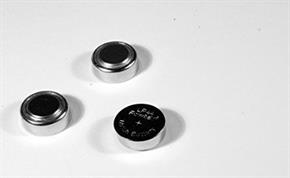
Everyone has them in their home, but button batteries (also known as coin or lithium batteries), can cause serious harm and death if they are ingested.
Once inside the body, the battery discharges an electrical current which causes a build-up of caustic soda, or sodium hydroxide. This causes severe tissue damage; tissue burns in the oesophagus affect the major blood vessels and lead to catastrophic haemorrhage.
Even discharged (what we would call ‘flat’) batteries can have this effect, and button batteries pushed into ears or nostrils have also been known to cause serious injuries.
Although most cases involve children who inadvertently mistake the battery for a sweet, battery ingestion affects all age groups; older people with confusion or poor vision can sometimes mistake the battery for a pill, and older children and adults have been known to swallow the batteries as a means of self-harming.
The ingestion of a button battery must be treated as a medical emergency – even if the battery is not damaged or leaking. Symptoms of tissue damage such as haematemesis, haemoptysis and respiratory difficulties can manifest up to 28 days after, so it’s important to consider the possibility of prior button battery ingestion where these symptoms occur.
Reports from NHS England from the last four years have identified five cases where severe tissue damage occurred after apparent delays in suspecting, diagnosing or treating button battery ingestion in small children; one child died.
Removal of the battery alone may be insufficient action to prevent further damage, with further symptoms manifesting later - patients need expert input, and careful monitoring and follow-up.
A button battery/cell is a small, single cell battery shaped like squat cylinder typically 5-25 mm in diameter and 1-6 mm high—like a button on a garment, hence the name. Button batteries are commonly used to power things like wrist watches, pocket calculators, hearing aids and other small electronic devices.
Published 31st December 2014